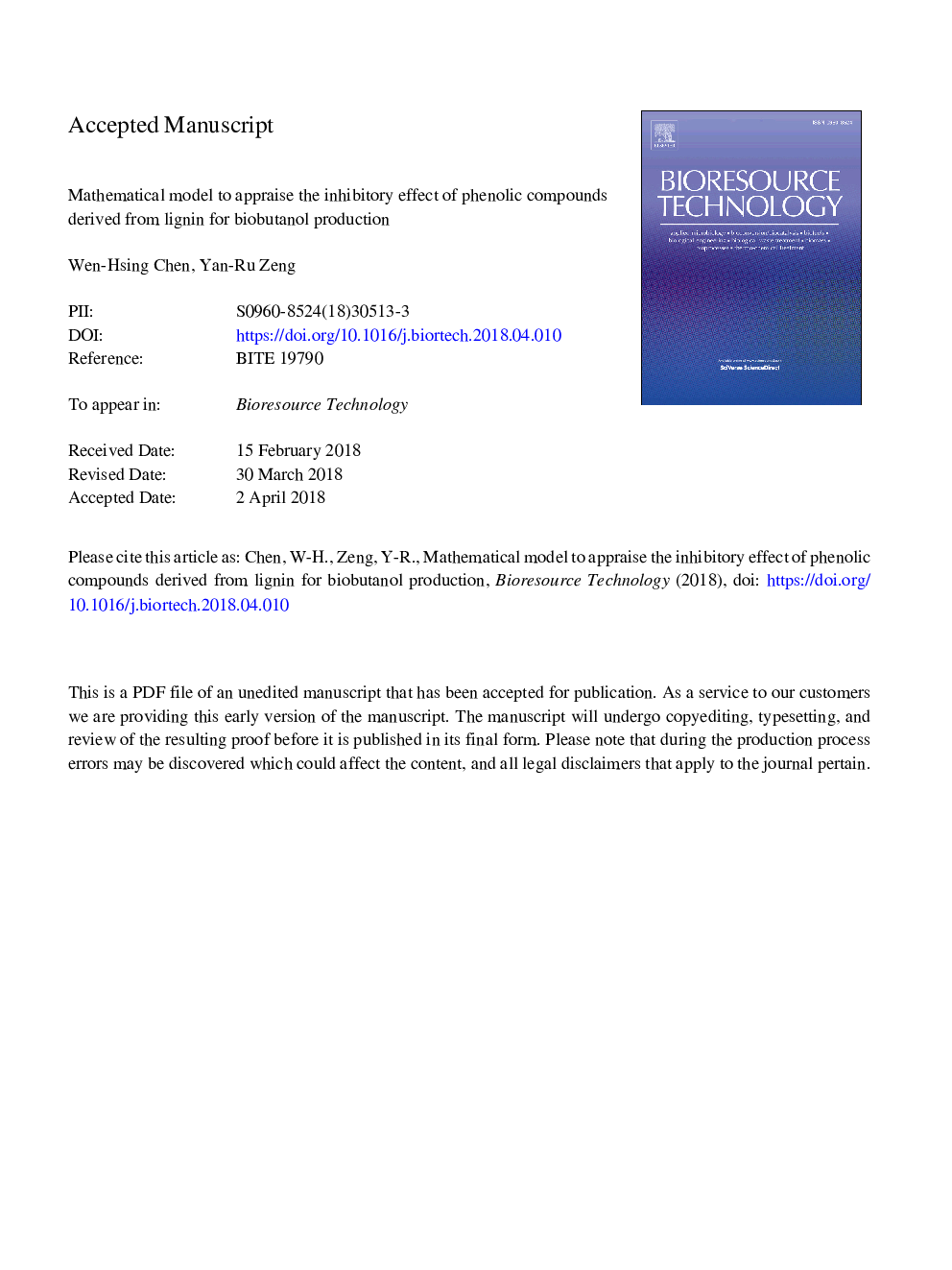| Article ID | Journal | Published Year | Pages | File Type |
|---|---|---|---|---|
| 7066984 | Bioresource Technology | 2018 | 33 Pages |
Abstract
This study aimed to establish a mathematical modeling to evaluate the inhibitory effect of phenolic derivatives on acetone-butanol-ethanol (ABE) fermentation by Clostridium saccharoperbutylacetonicum N1-4. Vanillin, 4-hydroxybenzoic acid, and syringaldehyde were selected to represent guaiacyl, hydroxyphenyl, and syringyl phenols, respectively, to be examined in a series of fed-batch experiments. Results show the presence of phenolic derivatives blocked the pathway of the assimilation of organic acids and reduced cell growth and glucose utilization. The inhibition model projected that the levels of 0.13, 0.14, and 0.04â¯g Lâ1 for vanillin, 4-hydroxybenzoic acid, and syringaldehyde, respectively, resulted in 25% inhibition of butanol production, whereas 100% inhibition was predicted at the levels of 4.94, 4.37, and 4.20â¯g Lâ1 for vanillin, 4-hydroxybenzoic acid, and syringaldehyde, respectively. Syringaldehyde was more toxic than the other two compounds. The established model described that the phenolic compounds derived from different phenyl propane monomers of lignin severely obstructed biobutanol production.
Related Topics
Physical Sciences and Engineering
Chemical Engineering
Process Chemistry and Technology
Authors
Wen-Hsing Chen, Yan-Ru Zeng,
